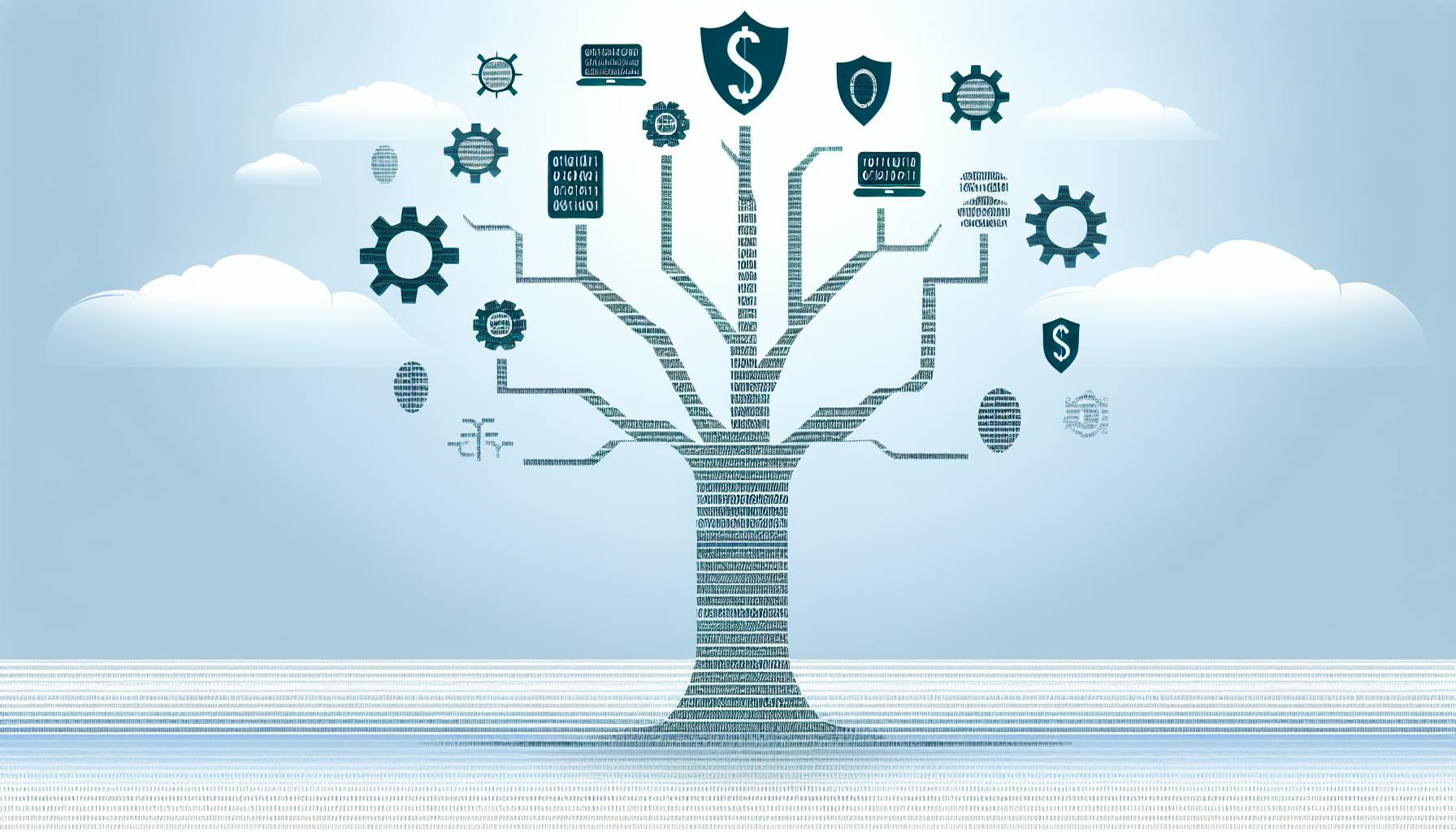Implementing AIOps can seem daunting for Boomi users, but it doesn't have to be.
With some key steps for integration and an understanding of the fundamentals, you can unlock substantial gains in visibility, automation, and optimization across your Boomi environment.
In this introductory guide, you'll get oriented on critical concepts like what AIOps is, why it matters for Boomi, and the preparatory groundwork needed to enable impactful implementations. You'll also get a sneak peek at real-world use cases where AIOps and Boomi together have driven transformative outcomes.
Introduction to AIOps on the Boomi AtomSphere Platform
AIOps brings advanced analytics and machine learning capabilities to the Boomi integration platform, enhancing visibility into critical system performance. By detecting anomalies in time series data, AIOps solutions like Eyer.ai allow organizations to identify issues proactively before they impact operations or reputation.
Understanding AIOps and #aiops in the Boomi Context
AIOps refers to Artificial Intelligence for IT Operations, leveraging AI/ML to analyze IT systems and data to surface insights. For Boomi, AIOps delivers real-time monitoring of integration workflows and data pipelines. It automatically learns normal performance patterns and alerts on anomalies like degradation or outages before they disrupt operations.
Key AIOps benefits for Boomi customers include:
- Automated anomaly detection across Boomi integration metrics
- Faster identification of performance issues impacting integrations
- Advanced notification of anomalies with root cause analysis
- Optimized IT staff efficiency with less alerts noise
By implementing AIOps, Boomi users gain 24/7 observability over integrations, ensuring critical connections between apps and data are running smoothly.
Exploring the Boomi Platform and its iPaaS Offering
The Boomi AtomSphere platform provides cloud-based integration Platform-as-a-Service (iPaaS) capabilities for connecting data and applications across the enterprise. With its low-code design and vast connector library, Boomi helps organizations break down data silos and streamline integration.
As an iPaaS leader, Boomi AtomSphere delivers a range of integration features:
- Cloud-based integration platform
- Connectors for 1,000+ apps/data sources
- Data and application integration flows
- API management and EDI transactions
- Centralized integration monitoring
AIOps perfectly complements Boomi's integration focus, enhancing visibility through advanced analytics to optimize reliability and performance.
The Strategic Importance of AIOps for Boomi ROI
Implementing AIOps can significantly improve Boomi ROI by:
- Reducing business impact and revenue loss from integration outages
- Lowering operational costs through automation vs. manual monitoring
- Increasing customer satisfaction with better uptime and reliability
- Optimizing staff efficiency with less alerts noise and manual investigation
- Protecting reputation by detecting anomalies before they disrupt operations
With AIOps, Boomi customers gain an automation and intelligence layer providing 24/7 observability over integrations. This ensures critical connections between business apps and data are running optimally at all times.
How do I integrate with Dell Boomi?
Integrating with the Dell Boomi platform involves three key steps:
Build
The build phase focuses on constructing the actual integration process. This involves:
- Selecting connectors from Boomi's extensive library to define the data sources and destinations
- Mapping data fields between the source and target to transform and transfer data
- Configuring data validation, error handling, sequencing, etc.
The user-friendly interface provides a visual workflow designer to model integration flows with drag-and-drop simplicity.
Deploy
Once built, the integration is deployed as a Boomi Atom - an execution runtime engine that manages integration workloads. Atoms run natively in the cloud or on-premises across various environments.
This separates the integration logic from the runtime, enabling flexibility in where integrations execute based on security, scalability or other needs.
Manage
The Boomi platform has integrated monitoring, allowing users to track integration metrics centrally. This provides visibility into:
- Integration status
- Data volumes
- Performance
- Errors
Tools are provided to set event alerts, enable/disable integrations, review logs and audit data changes.
This lifecycle allows users to build, adjust and govern integrations through a unified interface. With robust connectivity and management, Boomi integration is achievable for most modern IT environments.
What is atmosphere in Boomi?
Boomi AtomSphere is Dell Boomi's cloud-based integration platform as a service (iPaaS) that allows organizations to connect data, applications, and devices across on-premises and cloud environments.
Some key capabilities of Boomi AtomSphere include:
- Integration Platform as a Service (iPaaS): Boomi provides pre-built connectors and APIs to integrate various data sources, applications, cloud services, and IoT devices. This eliminates the need for complex point-to-point integrations.
- Data Management: Organizations can use Boomi for data integration, data quality, master data management, API management, B2B integration, and EDI transactions. This provides a unified data environment.
- Workflow Automation: Boomi allows creating integration workflows with drag-and-drop simplicity without coding. This accelerates app development and automation.
- Robust Connectivity: With over 200 pre-built connectors, Boomi can connect to various apps, data sources, protocols, and devices across cloud and on-premises.
In summary, Boomi AtomSphere is a flexible, scalable, and secure iPaaS platform to manage critical integration needs for modern digital businesses. The unified integration capabilities help organizations improve productivity, lower TCO, and drive innovation.
Is Boomi flow UI responsive?
Boomi Flow offers a responsive user interface framework that works across multiple channels. This allows for:
- Fully interactive and intuitive experiences optimized for any device
- Consistent branding and functionality across web, mobile, etc.
- Drag and drop application building with low code
- Real-time previews to visualize how the app will look on different platforms
With Boomi Flow's responsive UI capabilities, developers can rapidly build consumer-grade applications with engaging interfaces that automatically adapt to the optimal display for the user's specific device screen size. This saves development time while ensuring a seamless experience for end users no matter how they access the application.
Overall, Boomi Flow's responsive UI delivers key benefits like:
- Reduced time to market
- Lower development costs
- Increased user engagement and satisfaction
- Consistent and optimized UX across devices
- Future-proofing as new platforms emerge
By providing an intuitive low code platform with built-in responsive UI, Boomi enables quicker delivery of robust applications that can scale across channels. This allows organizations to get solutions to market faster and maximize their return on investment.
sbb-itb-9890dba
What is one way Boomi differs from other development tools?
Boomi differs from other integration and development tools in a few key ways:
- No Coding Required: Boomi provides a low-code/no-code graphical interface to build integrations, allowing users without coding skills to integrate applications and data. This is unlike tools that require knowledge of languages like Java or .NET.
- Atom-Based Runtime: Boomi has its own runtime environment called an Atom that handles connectivity, data mappings, process execution, etc. Atoms run integrations designed in Boomi's UI. This provides flexibility compared to coding an app in a proprietary language.
- Integration PaaS: Boomi is offered as an integration platform-as-a-service (iPaaS). This means Boomi handles infrastructure provisioning, scalability, high availability and other platform-level capabilities as a service. Users don't have to worry about managing integration infrastructure.
- API-Led Connectivity: Boomi provides connectivity to systems and applications via APIs and web services. This facilitates modern API-led integration architectures. Legacy tools often rely on less flexible protocols.
So in summary, Boomi differs by providing a low-code way to achieve integration, with built-in connectivity, mapping and processing capabilities, provided as a managed cloud service. This combination of ease of use plus flexible delivery is a key differentiation in the integration space.
Preparatory Steps for AIOps Implementation on Boomi
Outlining the initial considerations and steps necessary to integrate AIOps within the Boomi environment, setting the stage for advanced observability and monitoring.
Assessing Boomi API and System Data Sources
The Boomi platform provides a rich set of APIs that enable access to integration processes and data flows across the AtomSphere. As a first step in implementing AIOps, it is important to identify the key data sources that will feed monitoring and analytics.
This can include:
- Atom usage and performance metrics
- Integration uptime/downtime
- Error logs and notifications
- Data throughput rates
- API latency metrics
Understanding these data sources allows appropriate connectivity to the AIOps platform for ingestion, processing and anomaly detection.
Establishing a Foundation for #DevOps and #Cybersecurity
Implementing AIOps can significantly augment #DevOps practices for those leveraging the Boomi platform. Real-time observability surfaces insights to optimize release cycles, while anomaly detection can catch regressions.
It also bolsters #Cybersecurity:
- Rapid identification of data exfiltration
- DDoS attack detection
- Automated response via integration with security orchestration tools
Building in these capabilities upfront ensures the integration foundation supports continuous improvement and threat monitoring.
Integrating AIOps with Boomi for Enhanced Observability
Once target data sources are identified, the next step is integration with the AIOps platform. Boomi's iPaaS capabilities streamline this via built-in connectors.
Benefits include:
- Real-time monitoring dashboards
- Noise reduction via correlation of cross-system anomalies
- Flexible notifications (email, SMS, chatbots)
- API for integration with ITSMs like ServiceNow
This unlocks continuous observability for all integration flows spanning on-prem, SaaS and cloud.
Leveraging #generativeAI for Boomi Automation
Looking ahead, #generativeAI unlocks new possibilities for automating workflows on Boomi:
- Natural language commands to execute integration tasks
- Automated mapping suggestions between data schemas
- Anomaly classification and recommended remediations
As this technology matures, it will amplify the power and flexibility of the Boomi platform.
Building AIOps-Driven Workflows in Boomi
Delving into the practical aspects of creating AIOps-enabled workflows on the Boomi platform, illustrating how this enhances integration and automation capabilities.
Designing AIOps-Enhanced Boomi Integration Workflows
The Boomi platform provides a flexible, low-code environment for creating integrations and workflows between various systems and applications. Integrating AIOps capabilities can further optimize these workflows by:
- Automated anomaly detection in workflow execution to identify performance issues or errors
- Insights into workflow usage patterns to highlight optimization opportunities
- Predictive analytics to forecast workflow resource needs and head off potential bottlenecks
When designing AIOps-powered Boomi workflows, key steps include:
- Instrumenting workflows to capture relevant time-series telemetry data at critical steps
- Setting up notifications to receive AIOps alerts when anomalies are detected
- Configuring response workflows to trigger automated actions based on AIOps insights
- Enabling closed-loop remediation by feeding optimization recommendations back into workflows
Overall, AIOps delivers continuous feedback to enhance reliability, scalability and automation of Boomi workflows over time.
Automating Boomi Processes with AIOps Insights
AIOps platforms like Eyer provide actionable insights by correlating Boomi workflow telemetry against learned baseline patterns. This knowledge can drive increased automation, including:
- Dynamic resource scaling to handle workflow surges
- Automated rollback when anomalous behavior is detected
- Policy-driven workflow prioritization based on business value
- Self-healing by triggering corrective workflows to prevent errors
Setting automation policies in Boomi using AIOps inputs enables:
- Faster reactions to workflow state changes
- Reduced manual oversight needed
- Optimized workload balancing and throughput
By closing the automation loop from insights to actions, AIOps transforms Boomi from passive to active management.
Optimizing Boomi Deployments with AIOps Recommendations
As integration needs grow, AIOps helps ensure optimal Boomi deployment configurations by:
- Monitoring utilization across Atom runtimes and system resources
- Identifying contention hotspots indicative of scaling needs
- Recommending adjustments to resource allocation policies based on workflow demand patterns
- Predicting when additional capacity should be provisioned to avoid performance hits
This enables right-sized deployments via:
- Scaling up Atom resources to meet spikes in integration workloads
- Scaling out Atoms/runtimes to balance increased loads
- Fine-tuning of memory, connection pools and services for cost efficiency
Continually optimizing deployments through data-driven AIOps recommendations keeps Boomi integration infrastructure aligned to business needs.
Ensuring #CloudNative Resilience with Boomi and AIOps
As complexity grows from multi-cloud and microservices architectures, AIOps helps safeguard resilience by:
- Monitoring integration workflows across cloud environments
- Detecting correlation anomalies indicative of downstream issues
- Identifying root causes across services and clouds
- Recommending remediation actions to minimize error propagation
Joint AIOps and Boomi capabilities can enhance cloud-native resilience:
- Better visibility into end-to-end integration health
- Automated failover and retry mechanisms
- Dynamic request routing and throttling to avoid overloaded services
- Predictive cloud provisioning based on traffic forecasting
The rich telemetry of Boomi integrations, when leveraged by AIOps, can be instrumental in assuring cloud-native application reliability and performance.
Case Studies: Successful AIOps Implementations on the Boomi Platform
Examining real-world examples where AIOps has been successfully leveraged to enhance the capabilities and performance of Boomi integrations.
Eyer - Boomi Integration Enhanced by AIOps
Eyer integrated their AI-powered observability platform with the Boomi AtomSphere to provide customers with enhanced monitoring and anomaly detection. By implementing AIOps, Eyer enabled proactive identification of data issues within Boomi integration workflows. This resulted in faster resolution times and improved operational efficiency.
Key outcomes included:
- Automated discovery and mapping of all Boomi integration components
- Real-time monitoring of integration performance and workloads
- Automatic baseline profiling and adaptive thresholding
- Intelligent alerting for anomaly detection
- Faster identification and diagnosis of root causes
For Eyer's customers using Boomi, this meant better protection for business revenue and reputation dependent on integration uptime and data integrity.
Achieving Proactive Monitoring with AIOps on Boomi
A financial services company leveraged AIOps within their Boomi implementation to shift from reactive to proactive monitoring. By ingesting integration metrics into the AIOps engine, they established dynamic thresholds tailored to their unique data patterns.
This enabled the early detection of anomalies such as spikes in memory utilization before they escalated into incidents. As a result, the company reduced costly outages by 73% and improved mean time to resolution by 5x.
Key benefits included:
- Customized anomaly detection rules for critical integrations
- Automated, full-stack topology mapping of Boomi components
- Intelligent correlation of events to speed up diagnosis
- Predictive capabilities to get ahead of potential issues
Leveraging AIOps for Strategic Decision-Making in Boomi Integrations
A global retailer optimized their Boomi iPaaS investment by feeding integration telemetry into an AIOps solution. Beyond infrastructure monitoring, they utilized AIOps analytics to uncover usage trends and identify optimization opportunities.
By analyzing workload data with machine learning algorithms, they determined that a subset of lower priority integrations were utilizing a disproportionate amount of resources. The retailer consolidated these onto dedicated Atom clusters, freeing up capacity for high-value customer-facing integrations.
This example highlights how AIOps data can guide strategic decisions to improve ROI. Key insights delivered:
- Visibility into integration usage and workloads
- Automated mapping of data flows and dependencies
- Optimization recommendations based on anomaly detection
- Capacity planning analysis and forecasting
Enhancing #ipaas Capabilities with AIOps Innovations
As an industry leader in the iPaaS market, Boomi continues to push the boundaries of what integration platforms can achieve. One area of focus has been augmenting the AtomSphere’s capabilities through AIOps advancements.
By embedding machine learning algorithms directly into the integration workflow, Boomi has enabled use cases like predictive maintenance and intelligent alert grouping. This reduces noise while accelerating time-to-resolution.
Additionally, Boomi recently announced a partnership with Eyer to bring enterprise-grade observability natively into AtomSphere. This integration will empower users to realize greater value from investments in the Boomi platform.
Conclusion: Harnessing AIOps for Transformative Boomi Operations
Recapitulating the AIOps-Boomi Synergy
AIOps and Boomi form a powerful combination for enhancing integration capabilities. By applying AIOps for observability of the Boomi integration platform, organizations gain greater visibility into data flows, workloads, and overall platform health. This allows for more proactive management, faster anomaly detection and remediation, and data-driven decision making.
Key synergies include:
- Real-time monitoring of integration performance KPIs at scale
- Automated insights into data throughput, errors, latency across integration flows
- Anomaly detection for performance dips and data integrity issues
- Integration with Boomi AtomSphere for contextual alerts and notifications
Together, AIOps and Boomi create a robust integration infrastructure poised for innovation.
Future Outlook: AIOps as a Catalyst for Boomi Innovation
As AIOps matures, expect deeper integration and automation between the technology and Boomi's integration platform. Possible future developments include:
- Predictive analytics around integration workload capacity planning
- Automated remediation actions through integration with Boomi Flows
- Natural language query of integration metrics and health data
- Integration performance benchmarking against industry standards
- Risk analysis around business KPI impacts from integration platform anomalies
AIOps serves as a catalyst for Boomi to enhance self-driving integration capabilities and ensure critical business data flows operate optimally.
Key Takeaways for Boomi Users Implementing AIOps
When planning an AIOps implementation with Boomi, key points include:
- Start small with critical integration flows and scale out. Avoid a big bang approach.
- Focus monitoring on key integration performance KPIs like throughput, latency, errors.
- Leverage AIOps' anomaly detection for alerts vs. static thresholds.
- Integrate alerts with notification channels like email, SMS, chatbots.
- Build executive support through AIOps visibility into integration-dependent business KPIs.
Following these takeaways will lead to an effective launch and expansion of AIOps capabilities.
Next Steps for Boomi and AIOps Integration
Ready to get started with AIOps for your Boomi platform? Key next steps include:
- Document critical integration flows tied to business processes
- Create list of key integration performance KPIs to monitor
- Explore AIOps platform options compatible with Boomi AtomSphere
- Start with 1-2 non-critical integrations for initial launch
- Slowly expand monitoring to additional integration flows
Following these actionable steps will setup your Boomi workflows for AIOps integration success.



